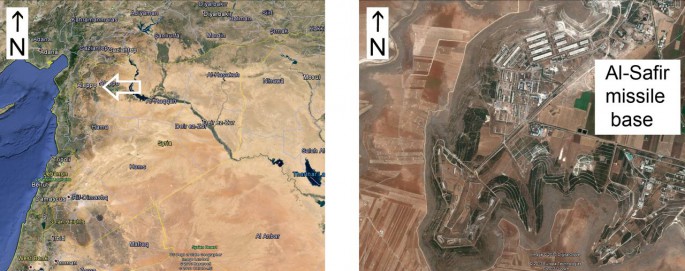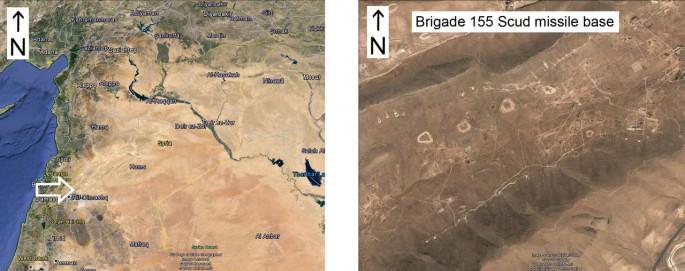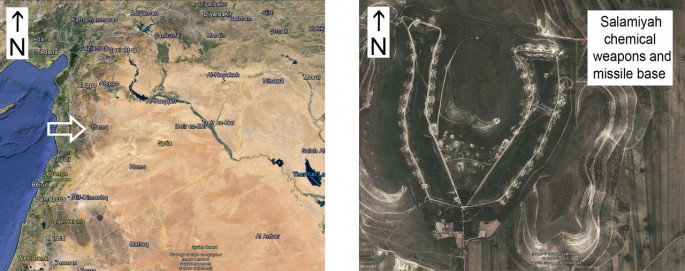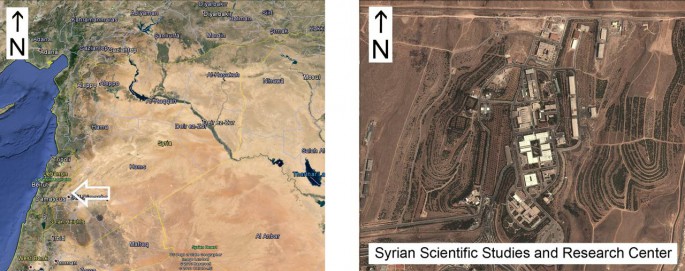Even though it did not suggest responsibilities, the recent UN report about the alleged use of chemical weapons in the Ghouta Area of Damascus on Aug. 21, 2013 confirmed that the attack was conducted with Sarin nerve agent.
The Sarin was dispersed with M14 140mm artillery rocket and an unidentified improvised rocket propelled munition.
Following the U.S. – Russia agreement to bring Syrian chemical weapons under international control, a missile strike against CW storage facilities is much less likely than few weeks ago. Nonetheless a plan to secure one of the largest CW stockpile in the world implies many difficulties.
Two of them are the number of storage sites spread over the country and the presence of many contested areas with frequent clashes between government forces and opposition fighters.
In the past weeks, fearing an imminent U.S. attack, Syrian armed forces are believed to have moved a large amount of equipment and weapons (including CW) far from the usual storage facilities, to minimize losses.
The movements of CW across the country are pinpointed by satellites and closely monitored by a bunch of spyplanes based in Cyprus and flying daily missions in the international airspace off Syria.
Anyway, considered the will of President al-Assad to cooperate, the investigations on the CW arsenal on the ground will start from known sites.
The following pictures, selected and commented by The Aviationist’s contributor Giuliano Ranieri, show some of chemical weapons production and storage facilities, missile bases and Republican Guard installations that could be inspected by personnel and are currently monitored by intelligence assets.
– Al Safir missile base, Aleppo Governorate (36°02’02″N 37°21’03″E)
Al Safir complex is a large installation houses a Scud missile base, missile storage, chemical weapons production and testing facilities. Between 2005 and 2008 there was a large extension program to increase the CW production capability. Under the adjacent mountains there’s a large underground storage complex. The base is also protected by SAM batteries.
– Brigade 155 Scud missile base, Rif Dimashq Governorate (33°41’53.66″N 36°31’31.75″E)
Brigade 155 is one of the most important offensive units of Syrian Army. Composed by eight battalions, the staff is almost exclusively Alawite and considered very close to the regime. Located south-west from Al Qutayfah, the facility is surrounded by two mountains with many hardened storage sites capable to accommodate transporter erector launchers (TEL) and eventually chemical weapons.
– Republican Guard base, Rif Dimashq Governorate (33°32’51.16″N 36°15’32.25″E)
Founded in the 1976, is the most loyal unit of the Syrian Armed Forces. The Guard is well equipped and trained and is responsible for Damascus’s defense. This is one of the elite unit installations located in North Damascus. Some sources reports that one of the alleged chemical weapon attacks was perpetrated from this site.
– Salamyia chemical weapons and missile base, Hama Governorate (35° 3’4.55″N 36°59’34.93″E)
A large storage complex built in a “U form” valley with approximately 50 hardened concrete bunkers. Last summer a wide rebel offensive was reported in the surrounding area and, currently fierce fighting continues.
– Syrian Scientific Studies and Research Center, Rif Dimashq Governorate (33°34’31.62″N 36°14’23.95″E)
The Scientific Studies and Research Center (SSRC), or Centre D’Etudes et de Recherches Scientifiques is a government agency tasked to conduct studies in social, administrative, agricultural and technological fields. It’s also believed to be involved in nuclear, chemical and biological weapon research and development, the site showed in the picture is one of the SSRC facilities. Located in Jamraya the complex was hit on Jan. 31, 2013 by an alleged Israeli airstrike. Three months later, another airstrike hit a facility a mile from the research center.
Top Image credit: Christopher Michel/Wiki. All the others Giuliano Ranieri / Google Earth














